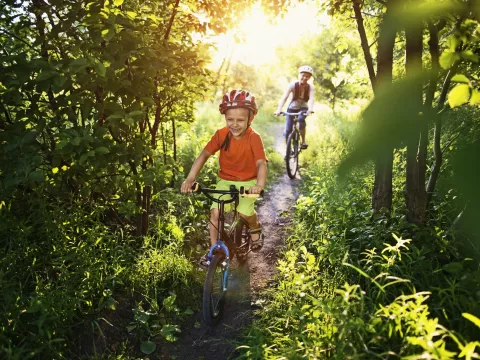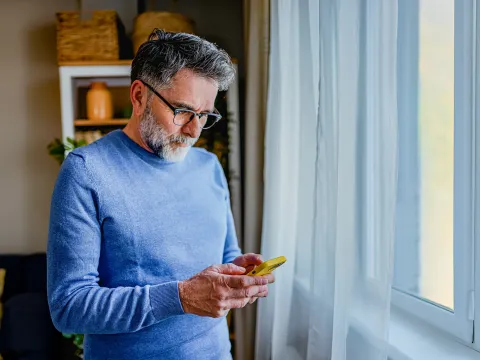- AdventHealth Centra Care

Imagine putting your hand on a hot burner and feeling the pain three hours later. That's what it's like to be sunburned, a delayed reaction that can be especially damaging to children who don't know anything is wrong until the damage is already done. And though a childhood sunburn may heal in a matter of days, the damage could last a lifetime.
You keep track of so much when it comes to your child, and it can be difficult to think about sun damage on top of everything else. That's why it is important to develop habits that make it easy to protect your children, like keeping sunscreen in the car, bag or child's backpack.
The risks of repeated sun exposure are real but not frightening given our knowledge of how to prevent skin cancer.
Though we can't reverse the consequences of excessive sun exposure, we can prevent it. Teaching your kids about how to protect themselves from solar radiation can give them good lifelong habits and prevent skin cancer decades down the road.
Like a snowball growing as it rolls down a hill, your risk for skin cancer grows with each bad sunburn, starting in childhood. Studies show that five blistering burns increase your lifetime risk of melanoma by 80 percent.
Preventing these risks is a matter of knowing a handful of simple rules:
- Avoid sun exposure midday (between the hours of 10 am and 4 pm
- Wear protective clothing
- Seek shade whenever possible (and wear a hat!)
- Use sunscreen liberally on all exposed areas of skin
Know How Sunscreen Works
Like any medication, sunscreen isn't perfect, and knowing its limitations will help you maximize its benefits. Here are some reminders:
- It generally takes around 30 minutes to be effective.
- You should re-apply sunscreen at least every two hours, but more often if you're sweating, swimming or using a towel. This advice holds true for water-resistant sunscreens as well.
- The American Academy of Dermatology recommends sunscreen of SPF 30 or higher, sunscreen with broad-spectrum coverage, and water resistance.
- Because clouds only block a small portion of harmful radiation, you should apply sunscreen on overcast days as well as sunny ones.
- People with dark skin should still use sunscreen, as their skin can still be damaged by UV radiation.
Just as a seatbelt isn't a license to drive unsafely, sunscreen is not meant to allow kids to spend more time in the sun. When possible, use multiple forms of protection and keep sunscreen handy for whenever your child is outside.
Though doctors once said sunscreen should never be applied to infants younger than six months, that thinking has changed somewhat. While protective clothing and shade are preferred, if they are not immediately available, you can apply a little sunscreen to small areas on your baby's exposed skin.
Cover Up
Though just about any clothing can block some of the suns rays, its effectiveness as sunblock varies widely. Darker clothes are typically more effective, and wet clothes are less effective than dry ones.
Consider purchasing children's clothing specifically made to offer protection from the sun.
Hats, too, offer great protection, but baseball caps leave the ears and neck uncovered. Consider a wide-brimmed hat, or use sunscreen if your child wears a cap.
Another part of sun safety many of us don't think about concerns the eyes. Though they can't get sunburned, your child's eyes may develop cataracts later in life if they're not protected from UV rays. Find wraparound sunglasses that block as much of the suns rays including both harmful types, UVA and UVB as possible.
Treating Your Sunburn
Unfortunately, there is little one can do after their child's skin is damaged but to ease their pain and help skin heal.
Use lotion with aloe vera and an over-the-counter pain reliever. A cool bath can relieve pain. Also, it is important to stay out of the sun until the redness and pain go away.
If your child's sunburn is serious including if it forms blisters or comes with symptoms of heat stress like fever, chills and nausea see a health care provider immediately.
Whether your child likes to play sports, frolic in the surf or search for bugs in a field, we are an advocate for helping families stay safe while doing what makes them happy.





